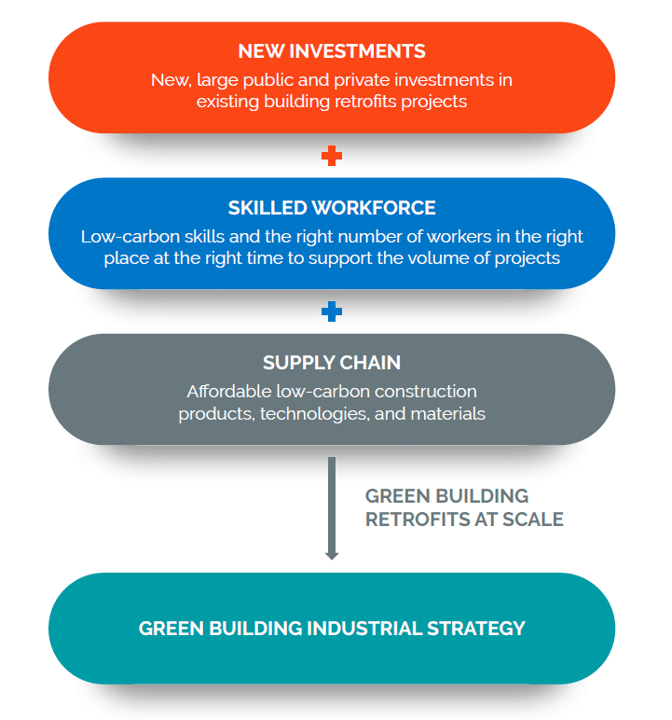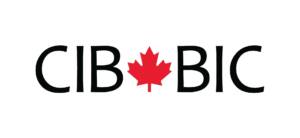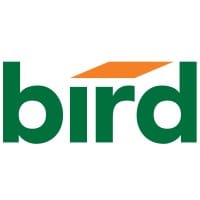Green Retrofit Economy Study
CAGBC and the Delphi Group‘s new study, Green Retrofit Economy Study profiles key pathways that will equip the green building ecosystem with insights into the workforce and supply chain needs across Canada’s retrofit economy. Through green retrofits, Canada’s buildings can contribute to net-zero climate targets, make buildings more resilient to climate change and extreme weather events, and provide rewarding job opportunities while strengthening the domestic supply of low-carbon products and services.
Growing the low-carbon economy is a key component of the federal government’s plan to generate economic growth while mitigating the worst impacts of climate change and reducing environmental impacts. Over $3.6 billion has been committed to finance energy efficiency upgrades and low-carbon retrofits for large buildings as a way to meet GHG emission reduction targets. This historically significant investment will require the green building workforce to triple by 2030 to meet the demand for sustainable building construction and renovation.
To realize the opportunities that exist from this investment, Canada will need to lean heavily on a skilled, qualified, and growing workforce, as well an accessible and affordable supply chain of relevant low-carbon products, materials, and equipment.
Findings
The report anticipates that Canada will see a shortage of skilled workers in the near term, even without an increase in retrofit projects. These include carpenters, HVAC trades, plasterers and drywall installers, and mechanical engineers and technicians. Enhancing expertise and knowledge across the retrofit spectrum, including among decision-makers, designers, financing experts and consultants, will help to address the complexity and capital constraints associated with retrofit investments.
Investments in a robust, accessible, and an affordable supply chain are also needed to drive innovation and secure access to the products and services needed to complete green retrofits at scale. The report identified more than 25 technologies and products that are directly relevant to low-carbon retrofits, including building automation systems, heat pumps, heat and energy recovery systems, wall recladding systems, thermal bridging technology and integrated photovoltaics.

Since the release of the Green Retrofit Economy Study, new technical reports have been shared focusing on three key aspects of the green retrofit economy. Together, these reports show how Canada’s building sector can contribute to net-zero climate targets, make buildings more resilient to climate change and extreme weather events, and provide rewarding job opportunities while strengthening the domestic supply of low-carbon products and services.
Demand-side analysis
Explores the factors driving demand for green retrofits, and presents quantitative and qualitative research findings about what it will take to reach net-zero targets for existing buildings.
Summary of workforce supply
Describes the skills needed and the training ecosystem for key occupations within the green retrofit economy.
Supply readiness
Presents examples and evaluates the readiness of low-carbon technical interventions for large buildings in Canada.
Project funding partners and sponsors
This project is supported through funding from the Canada Infrastructure Bank, Ontario Construction Secretariat, Federation of Canadian Municipalities, and Canada Mortgage and Housing Corporation.







